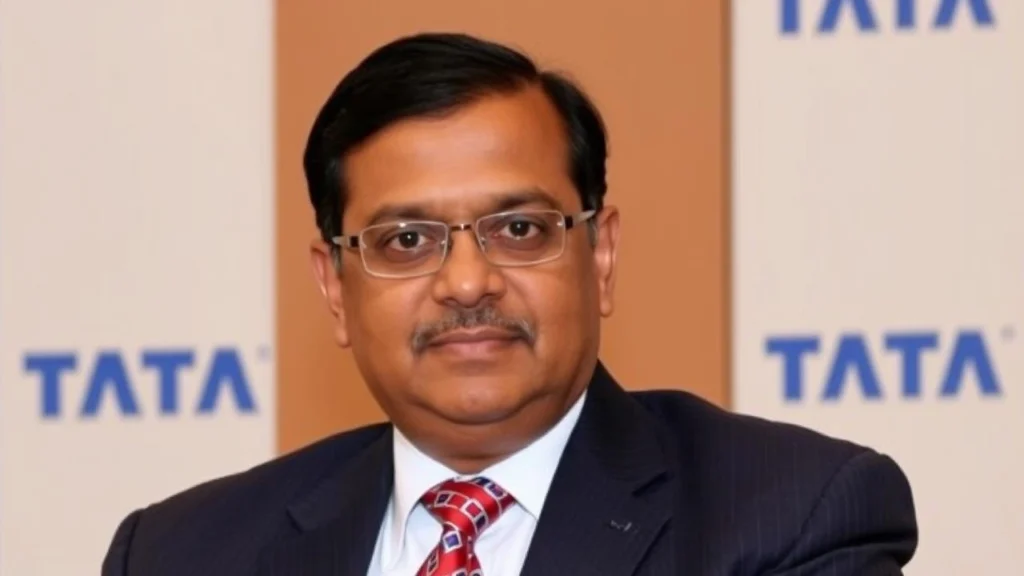In an era defined by the accelerating transition to electric mobility, the strategic sourcing of critical raw materials has become paramount for automotive manufacturers worldwide. Tata Motors, a leading Indian automotive giant, is proactively addressing this challenge, with Chairman N. Chandrasekaran recently highlighting the company’s foresight in securing vital supplies of rare earth magnets, alongside an assurance of sufficient existing stock. This strategic positioning underscores Tata Motors’ commitment to a sustainable and uninterrupted electric vehicle (EV) production roadmap, even as global attention intensifies on the geopolitical and environmental implications of rare earth mineral extraction and processing.
Rare earth magnets, particularly Neodymium-Iron-Boron (NdFeB) magnets, are indispensable components in the high-performance electric motors that power modern EVs. Their exceptional magnetic strength allows for smaller, lighter, and more efficient motor designs, directly translating to improved vehicle range, acceleration, and overall performance. However, the supply chain for these critical materials is notoriously concentrated, with China dominating both the mining and refining of rare earth elements. This concentration has led to growing concerns among nations worldwide about supply chain vulnerabilities, price volatility, and potential geopolitical leverage.
Chandrasekaran’s statement signifies a crucial step in de-risking Tata Motors’ EV ambitions. By focusing on securing diverse sources for rare earth magnets, the company is demonstrating a commitment to long-term operational resilience. This proactive approach is not merely a reactive measure to current global supply chain anxieties but a strategic imperative. As the demand for EVs continues to surge, driven by regulatory mandates and consumer preference, the competition for rare earth materials is expected to intensify significantly.
The Strategic Importance of Rare Earth Magnets
The significance of rare earth magnets in the automotive sector cannot be overstated. Their unique properties enable:
- Higher Motor Efficiency: Leading to improved energy consumption and extended EV range.
- Reduced Motor Weight and Size: Contributing to overall vehicle lightweighting and better packaging.
- Enhanced Performance: Delivering the torque and acceleration expected by EV consumers.
- Durability and Reliability: Ensuring the longevity and performance of electric powertrains.
Given their critical role, understanding the global landscape of rare earth magnet supply is essential.
| Region/Country | Key Rare Earth Element Production (approx. %) |
|---|---|
| China | 60-70% |
| United States | 10-15% |
| Australia | 10-15% |
| Myanmar | 5-10% |
| Vietnam | 5-10% |
Note: These figures represent raw material extraction and can vary annually. Processing and refining are even more heavily concentrated in China.
The data clearly illustrates China’s dominant position in the upstream supply chain. This has prompted global efforts to diversify sourcing, including investments in new mining projects and the development of advanced recycling technologies. Tata Motors’ announcement suggests they are actively participating in this diversification strategy, potentially through direct partnerships with mining companies, joint ventures, or long-term supply agreements with non-Chinese processors.
Tata Motors’ Multi-pronged Approach
While Chandrasekaran’s statement reassures stakeholders about current stock levels, the focus on “eyes rare earth magnet sources” indicates a forward-looking strategy. This likely encompasses several key initiatives:
- Diversification of Suppliers: Moving away from a sole reliance on any single region or supplier to mitigate risks. This could involve engaging with emerging producers in countries like the United States, Australia, or Canada, where new mining and processing facilities are being developed.
- Vertical Integration or Strategic Partnerships: Tata Motors might be exploring closer collaborations or even partial ownership stakes in mining or processing operations. This allows for greater control over supply and quality.
- Development of Alternative Technologies: While rare earth magnets are currently the benchmark, ongoing research into alternative motor technologies that utilize less or no rare earth elements is also a potential long-term strategy. However, the immediate focus is clearly on securing existing, high-performance solutions.
- Recycling and Circular Economy: Investing in or partnering with companies that specialize in the recycling of rare earth elements from end-of-life products, including old electronics and vehicles, can create a more sustainable and localized supply stream.
The assurance of “enough stocks” provides a crucial buffer, allowing Tata Motors the breathing room to implement these longer-term sourcing strategies without immediate operational disruptions. This proactive inventory management is a hallmark of robust supply chain planning, particularly in industries susceptible to raw material volatility.
Global Context and Future Outlook
Tata Motors’ strategic moves align with broader global trends in the EV battery and component supply chain. Governments and corporations across North America, Europe, and Asia are actively seeking to reduce their dependence on China for critical minerals, including lithium, cobalt, nickel, and rare earth elements. Initiatives such as the Inflation Reduction Act in the United States aim to incentivize domestic production and processing of EV components, including magnets.
The automotive industry is at a critical juncture. As the transition to sustainable mobility accelerates, the companies that can effectively navigate the complexities of raw material sourcing and supply chain management will be best positioned for success. Tata Motors, under Chandrasekaran’s leadership, appears to be demonstrating a keen understanding of these dynamics, prioritizing long-term supply security for a crucial component of its electric vehicle future.
As Chandrasekaran himself articulated,
“We are constantly looking at strengthening our supply chain, especially for critical raw materials. Securing our rare earth magnet supplies is a key part of our strategy to ensure uninterrupted growth in our EV business.”
This forward-thinking approach not only safeguards Tata Motors’ immediate production goals but also positions it as a resilient and reliable player in the rapidly evolving global automotive landscape. The company’s commitment to securing diverse sources for rare earth magnets signals a significant step towards bolstering its EV manufacturing capabilities and contributing to a more sustainable and secure future for electric mobility in India and beyond.
Frequently Asked Questions (FAQs)
Q1: What are rare earth magnets and why are they important for electric vehicles? A1: Rare earth magnets, primarily Neodymium-Iron-Boron (NdFeB) magnets, are powerful permanent magnets crucial for the efficient operation of electric motors in EVs. They enable smaller, lighter, and more potent motors, leading to better vehicle performance and range.
Q2: What are the main concerns regarding the supply of rare earth magnets? A2: The primary concern is the heavy concentration of rare earth element mining and processing in China, which can lead to supply chain vulnerabilities, price volatility, and geopolitical risks.
Q3: How is Tata Motors addressing these supply chain concerns? A3: Tata Motors is actively working to secure diverse sources for rare earth magnets, potentially through partnerships with new suppliers outside of dominant regions, strategic investments, and exploring recycling technologies. They have also confirmed sufficient existing stock.
Q4: What is the significance of Tata Motors securing these supplies for their EV business? A4: It ensures the long-term, uninterrupted production of their electric vehicles, de-risks their operations from global supply chain disruptions, and supports their ambitious growth plans in the EV sector.
Q5: Are there alternative materials or technologies that could replace rare earth magnets in EVs? A5: Research is ongoing into alternative motor designs and materials that use fewer or no rare earth elements. However, for current high-performance EVs, rare earth magnets remain the industry standard due to their efficiency and power density.
Tata Motors eyes rare earth magnet sources, has enough stocks: Chandrasekaran






